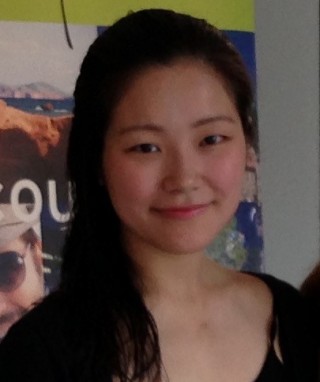Column Name
Title

Knock knock. The 16 kindergarteners take no notice as they run around the classroom at 8:30 on a Wednesday morning. Knock knock. Ms. Peña notices, though, and then the kids notice one of their classmates peering through the window. Ms. Peña stops a boy from opening the door, mouthing the words “you can open it” as she nods insistently to the girl with the pink backpack standing outside. When the girl doesn’t, Ms. Peña steps outside, and the volume inside rises, “Ohhh, she’s in trouble.” But a moment later, the girl, we’ll call her Emma, opens the door and walks in, bold and proud. Her classmates’ faces are filled with the anticipation of her getting in trouble, but Ms. Peña just says, “See, you can open the door!” To the class, she adds, “I was helping Emma open the door.” With that, the morning moves on smoothly, and everyone is happy, including Emma.
Body
I never expected to experience kindergarten as a college student, but I’m glad I did. From being greeted by a boy yelling “Who is that?” on my first morning, I knew I was in for an adventure when I started my field work at a public elementary school for underserved children, which followed my taking Lisa Andersen’s Studying New York City class last fall as part of Juilliard’s newly launched honors program. We studied various aspects of the city, including its history and education system by looking at primary and secondary sources, and we learned different styles of writing including ethnography, archive analysis, and literature review. For our final assignment, each of us wrote a proposal for an independent study course that we could potentially complete.
My goal was to study second-language acquisition in early childhood through service learning, which I started working on in the spring semester in a project that took shape in often unexpected ways. I was guided by Andersen and aided by her fellow liberal arts professor Robert Wilson, who led me through weekly meetings where we discussed second-language acquisition and service learning. For two months, I observed a kindergarten classroom one morning a week, with particular attention to teacher-student interaction. There’s no doubt that I learned about language training, but what I took away most was through Ms. Peña’s model behavior in regard to classroom management. Right away, I noticed the positive energy in the classroom: the students, despite their quarrels, seemed to get along well, and the teacher had an enthusiastic and generous attitude.
I learned an incredible amount, from the teacher’s role in creating a safe educational environment to managing inevitable obstacles while keeping calm and grounded. I imagine that if I teach one day and things aren’t going as hoped for (which is to be expected), I’ll strive to instill positivity, as Ms. Peña did, and not dwell on the negative: something along the lines of, “you did X really well here—can you apply it there?” instead of “X needs work there.”
Because this course consumed a large part of my spring academic life and because the outcome of the course depended heavily on the work I put into it, it was constantly on my mind. Soon enough, I realized that the lessons I was learning were universal and could be applied to my own practice or rehearsals. In a chamber music rehearsal, for instance, when my partners and I were unhappy with how we had played a passage, we tried to take a more positive approach to our communication. So what might have been, “we didn’t do the color change we should have” became “the color change there was really striking, so let’s do one here, too.”
While many people debate how to use discipline in the classroom, Ms. Peña seemed to find a balance. Though she disciplined her kids, she was kind and encouraging and never blamed any individual. When she wanted more students to work hard, she would point out a group of students that was focused, and say “I love how this table is working!” In this manner, she made one group proud, and also made the other tables want to be the exemplary group.
The most negative energy I observed in Ms. Peña was when she told her students, “It makes Ms. Peña sad to see her students [do such and such].” But even then she wasn’t blaming her students, rather, she was giving them something to think about. In fact, this method proved quite effective, I realized as one day a student replied, “that’s a problem!” Both the life lessons and the pedagogical practices I learned are ones I know I will keep forever.
While my initial expectations changed through the term, which sometimes caused uncertainty and even fear, that’s also true of student life and artistic life. We have expectations and goals but never fully know what is to come. If we loosen our grip and embrace the unexpected, it opens doors to more opportunities.




